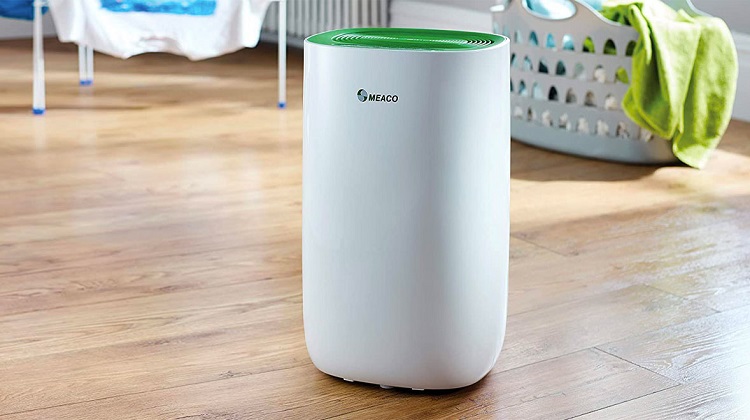Storing plastic items can be a challenging task due to the adverse effects of moisture and humidity. High levels of humidity can lead to plastic damage, mold, mildew, and other forms of corrosion. A dehumidifier for plastic material can prove to be a valuable asset for preserving plastic items by regulating the humidity in the air.
By ensuring that your plastic items remain dry and protected, you can significantly extend their lifespan while maintaining their appearance. Investing in a dehumidifier can save you time, money, and frustration by eliminating the need for constant maintenance and replacement of damaged plastic items. If you have any plastic items that require storage, it’s worth considering purchasing a dehumidifier for plastic material to keep them in optimal condition.
What is a Dehumidifier and How Does it Work?
Dehumidifiers are electrical appliances that reduce humidity in the air by collecting excess moisture in a container or draining it through a hose. Through the use of a fan, a dehumidifier for plastic material draws air in from its surroundings. The moisture in the air condenses into water droplets when it passes over cooling coils.
After the droplets fall into a collection tray or reservoir, the dry air is released back into the room, lowering the humidity level. A dehumidifier uses a refrigeration cycle, similar to air conditioning, wherein a compressor pumps refrigerant through the evaporator coils. These chilled coils absorb moisture from the warm and humid air before it is heated up by the condenser coils and released back into the room.
The extracted moisture is collected in a container or drain. Desiccant dehumidifiers are a type of dehumidifier that uses a material, such as silica gel, to absorb moisture from the air. The dehumidifier draws in humid air and removes the moisture using a refrigeration cycle or desiccant material, releasing drier air back into the room.
Considerations When Buying a Dehumidifier
When purchasing a dehumidifier for plastic material, it’s important to consider size, capacity, and any features that may be beneficial. The size should be big enough to effectively dehumidify the desired space while the capacity should be able to hold ample water. Features like built-in humidistats, timers, and air purifiers can assist in meeting one’s needs depending on their situation. All of these factors should be taken into account when selecting the best unit for your requirements.
How to Choose the Right Dehumidifier for Your Home
When selecting the right dehumidifier for your home, these guidelines can make the process easier. Calculate the square footage of the room to determine which capacity model is needed. Excessively humid rooms should opt for a higher capacity, such as a 70-pint model. Consider energy efficiency with an Energy Star-certified unit to save on energy bills.
When purchasing a dehumidifier for your bedroom or living room, ensure that it operates quietly by checking the decibel rating. Evaluate drainage options such as whether to use an internal tank or connect it to a drain hose with a nearby outlet. Other features like automatic shut-off and adjustable humidity settings can help make usage more convenient and effective.
By keeping these pointers in mind, you can select the appropriate dehumidifier for plastic material that helps maintain cleaner and healthier air at home.
Where to Buy a Dehumidifier
You can purchase dehumidifiers from a range of retailers both online and in-store. Below are some options for buying a dehumidifier for plastic material:
- Manufacturer websites, such as Flying Tiger KJ Co. LTD, Keystone, and hOmeLabs, sell their dehumidifiers directly on their websites.
- Department stores such as Walmart, Target, and Costco have a range of dehumidifiers at different price points.
- Appliance stores like Best Buy, Sears, and HHGregg carry dehumidifiers along with other household appliances.
- Home improvement stores like Home Depot, Lowe’s, and Menards offer a broad selection of dehumidifiers in varying sizes and models.
When buying a dehumidifier for plastic material, it is important to take into account various factors such as room size, dehumidification rate, energy efficiency, noise level, portability, maintenance, and price to choose the best one for your requirements.
The Best Ways to Use a Dehumidifier
To maintain the healthy air quality in your home, dehumidifiers can be a useful tool. Here are some effective ways to use a dehumidifier:
- Ensure proper placement: Place the dehumidifier in a central location within the room, away from walls and furniture, to allow for optimal air circulation.
- Keep windows and doors closed: To increase the efficiency of the dehumidifier, keep all windows and doors closed during operation.
- Set the humidity level: Most dehumidifiers have adjustable humidity settings. Set the desired humidity level according to your specific needs and the humidity level in the room.
- Use continuous mode: If you plan to use the dehumidifier for long periods, use the continuous mode instead of relying on the auto-shutoff function.
- Empty the water tank: If your dehumidifier has an internal tank, empty it regularly to prevent spills and maintain the unit’s effectiveness.
- Clean the filter: To ensure optimal performance and improve air quality, clean or replace the filter regularly.
- Ensure proper ventilation: Along with using a dehumidifier, it’s essential to ensure proper ventilation in the room. Use an exhaust fan or open a window occasionally to facilitate ventilation.
By following these tips, you can use your dehumidifier effectively to reduce excess moisture and enhance the air quality in your home.
Dehumidifier Maintenance and Care Tips
Dehumidifiers are appliances that can help reduce excessive moisture in the air, making your home a more comfortable and healthier place to be in. To ensure that your dehumidifier functions efficiently and lasts for a long time, here are some maintenance and care guidelines to follow:
- Regularly clean the air filter to avoid reduced efficiency and higher electricity bills, especially if you use the dehumidifier frequently. Cleaning every two weeks is recommended.
- Check and empty the water tank regularly as most dehumidifiers have a water tank that needs frequent emptying. This helps prevent overflow and damage to the unit.
- Clean the coils every few months using a vacuum cleaner or soft brush to prevent dirt, dust, and debris accumulation, which can reduce efficiency and increase electricity bills.
- Keep the area around the dehumidifier clean by regularly using a vacuum cleaner or soft brush to prevent dust and debris accumulation, which could also reduce the unit’s efficiency.
- Follow the manufacturer’s instructions on proper usage to ensure efficient operation and longevity. Ensure proper placement of the dehumidifier in a well-ventilated area, away from walls and furniture.
- Store your dehumidifier properly if you will not use it for a long time. Clean the unit thoroughly, remove the water tank, and store it in a cool, dry place.
By following these maintenance and care tips, you can keep your dehumidifier functioning efficiently and effectively for many years.
Conclusion
To ensure the longevity of your plastic items, it is crucial to keep them dry and protected. A dehumidifier for plastic material can aid in removing excess moisture from the air, thereby safeguarding your plastics against damage. Additionally, it also helps to eliminate harmful airborne particles like dust mites by reducing humidity levels in the air. By using a dehumidifier, you can enjoy several benefits that go beyond just protecting your plastic items, including improved health and comfort in any environment where excessive moisture may be present.



